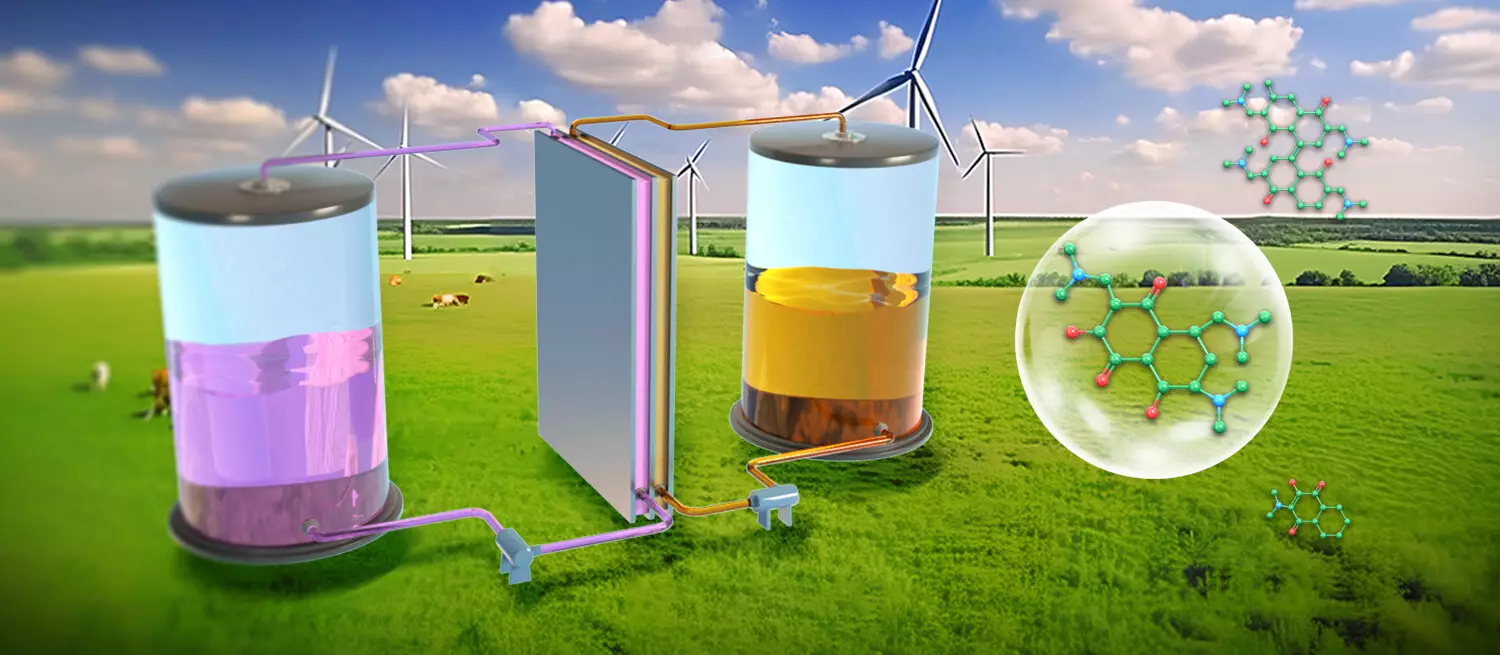Organic redox-active molecules (ORAMs) have emerged as a promising solution for achieving sustainable and efficient energy storage. Their inherent diversity and the potential for cost reduction make them particularly appealing candidates for applications in aqueous organic flow batteries (AOFBs). However, a significant barrier remains—the stability of these molecules during the energy conversion process. The capacity for ORAMs to retain their redox activities largely depends on their resilience against side reactions which can deactivate them.
Air stability is a persistent issue for many ORAMs, complicating their practical deployment in energy systems. The latest research led by Prof. Li Xianfeng and Prof. Zhang Changkun from the Dalian Institute of Chemical Physics (DICP) sheds light on this challenge. The research team has developed innovative naphthalene derivatives equipped with hydroxyl and dimethylamine groups that exhibit remarkable stability in atmospheric conditions. Published in the esteemed journal Nature Sustainability, this work showcases the demand for ORAMs that can withstand exposure to air without significant degradation during the charge and discharge cycles.
Advancements in Naphthalene Derivatives
The recent study indicates a breakthrough in the synthesis of naphthalene derivatives, outlining a scalable approach that combines traditional chemical methods with in-situ electrochemical techniques. This not only streamlines the purification process but also reduces the overall cost associated with the production of these redox-active compounds. The pivotal aspect of this research lies in its focus on the structural changes that occur in the naphthalene molecules during electrochemical reactions, further enhancing our understanding of their stability and reactivity.
Performance Metrics and Scalability
The DICP team reported that their 1.5 mol/L naphthalene-based AOFB demonstrated an impressive cycling performance over 850 cycles—approximately 40 days—with a retention capacity of 50 Ah L-1. Notably, the system maintained functional stability even under continuous airflow conditions, successfully operating for 600 cycles without any notable loss in capacity or efficiency. These results strongly affirm the potential for naphthalene derivatives as efficient catholytes with excellent air stability.
The researchers’ achievements also extend to large-scale applications. By scaling up the synthesis of naphthalene derivatives to a kilogram scale, they have been able to develop pilot-scale battery stacks that showed impressive results. The stacks reached an average system capacity of approximately 330 Ah and sustained remarkable cycling stability over 270 cycles with a capacity retention rate of 99.95% per cycle.
Prof. Li Xianfeng has emphasized that this research paves the way for an exciting new frontier in the development of air-stable organic molecules tailored for sustainable electrochemical energy storage. As the demand for efficient and durable energy storage solutions grows, the innovations introduced through this research could play a significant role in the evolution of green technologies. Continued exploration into ORAMs presents a pathway toward overcoming existing limitations in energy storage systems, marking an important step toward a more sustainable energy future.

